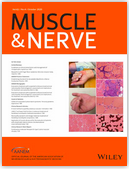 Spinal muscular atrophy (SMA) is the second most common neuromuscular disease in children. Due to a genetically determined deficiency in SMN protein, SMA causes paralysis of the limbs and trunk, respiratory disorders and orthopedic complications, all the more so if it occurs early. There are four types (from I to IV) depending on the age of onset of symptoms and the maximum functional abilities reached at the motor level. Three innovative therapies have been developed in recent years: Spinaraza®, Zolgensma® and Evrysdi®. All aim to increase the production of the SMN protein.
Spinal muscular atrophy (SMA) is the second most common neuromuscular disease in children. Due to a genetically determined deficiency in SMN protein, SMA causes paralysis of the limbs and trunk, respiratory disorders and orthopedic complications, all the more so if it occurs early. There are four types (from I to IV) depending on the age of onset of symptoms and the maximum functional abilities reached at the motor level. Three innovative therapies have been developed in recent years: Spinaraza®, Zolgensma® and Evrysdi®. All aim to increase the production of the SMN protein.
In an article published in July 2020, American clinicians report their experience in prescribing sequential dual therapy, combining Spinraza® with the gene therapy product, Zolgensma®. This involved five infants with an early form of the disease (SMA type 1). Four of them first received Spinraza®, on average until the age of 23 months, before receiving a single dose of Zolgensma® followed, in three out of four cases, by resuming Spinraza ®. In only one case was Spinraza® prescribed only as a second step, gene therapy being the first line therapy. The authors do not really comment on the clinical efficacy even though they observe an improvement in the CHOP-INTEND score. The children are in fact all ventilo-dependent and were treated relatively late. The liver toxicity of gene therapy is once again emphasized.
